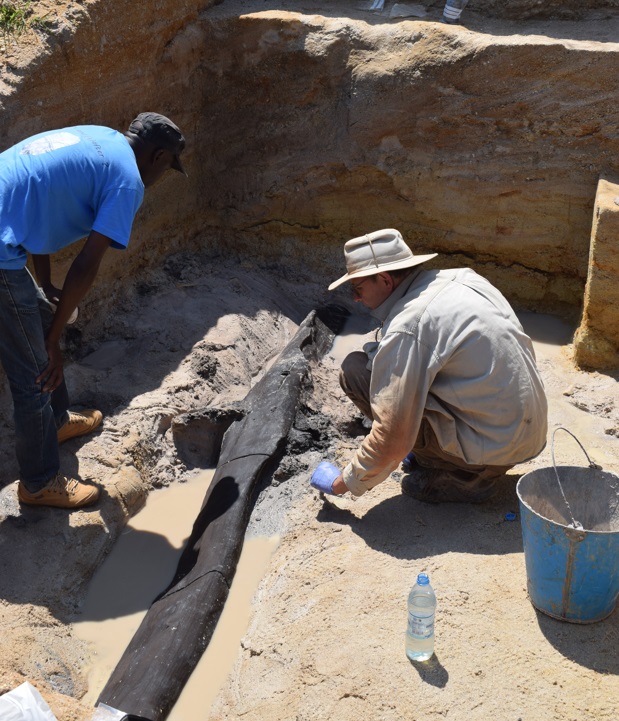Archaeologists believe they have found evidence of a 476,000-year-old wooden structure in Africa. If their work is correct, this would be the earliest known wooden structure ever discovered, marking a mind-blowing milestone in the development of ancient humans.
The wooden remains were discovered around the Kalambo River basin of Zambia near to Kalambo Falls. Describing the findings in a new study, the researchers write that the remains consist of “two interlocking logs joined transversely by an intentionally cut notch.”
As shown by the cut marks from stone tools, it’s clear that this wasn’t just a fallen tree log. Instead, it was an intentionally crafted object that likely served as a part of a structure, perhaps a walkway or a raised platform to cope with the area’s intermittent flooding.
The discovery is exceptional as it’s incredibly rare for wood to remain intact for this long. Left to the elements, wood will quickly rot and decompose. However, the permanently high water levels found at Kalambo Falls managed to preserve the wood in relatively good condition.
To date the woody remains, scientists at the University of Liverpool used new luminescence dating techniques. Remarkably, this method is able to determine the age of an object by working out when minerals in the sand surrounding the remains were exposed to sunlight.
This technique dated the site to 476,000 years ago, which is much older than previous dating techniques estimated. This is long before our species (Homo sapiens) even evolved, indicating the structure was the work of another hominin.

The excavation team uncovering the wooden structure.
Image credit: Professor Larry Barham, University of Liverpool
The findings challenge many of the assumptions we had about ancient humans around this time. Firstly, it strongly indicates that Stone Age humans were not strictly nomadic. Kalambo Falls had a permanent source of water, as well as an abundant forest that would have provided them with more than enough food and resources. It’s not hard to imagine that they settled down here, using the forest trees to construct permanent structures that lasted for generations.
Secondly, this evidence suggests these ancient humans were more technologically advanced than we usually give them credit for. If this wood really was once someone’s home, it shows they had physical skill, advanced tool use, and even an element of creativity that allowed them to “see the wood for the trees,” so to speak.
Ultimately, it looks like these ancient humans – who were not Homo sapiens – were more like us than previously thought.
“This find has changed how I think about our early ancestors. Forget the label ‘Stone Age,’ look at what these people were doing: they made something new, and large, from wood. They used their intelligence, imagination, and skills to create something they’d never seen before, something that had never previously existed,” Professor Larry Barham, an archaeologist from the University of Liverpool who leads the “Deep Roots of Humanity” research project, said in a statement.
“They transformed their surroundings to make life easier, even if it was only by making a platform to sit on by the river to do their daily chores. These folks were more like us than we thought.”
The new study was published in the journal Nature.
Source Link: World's Oldest Wooden Structure Made By Ancient Humans Is 476,000 Years Old